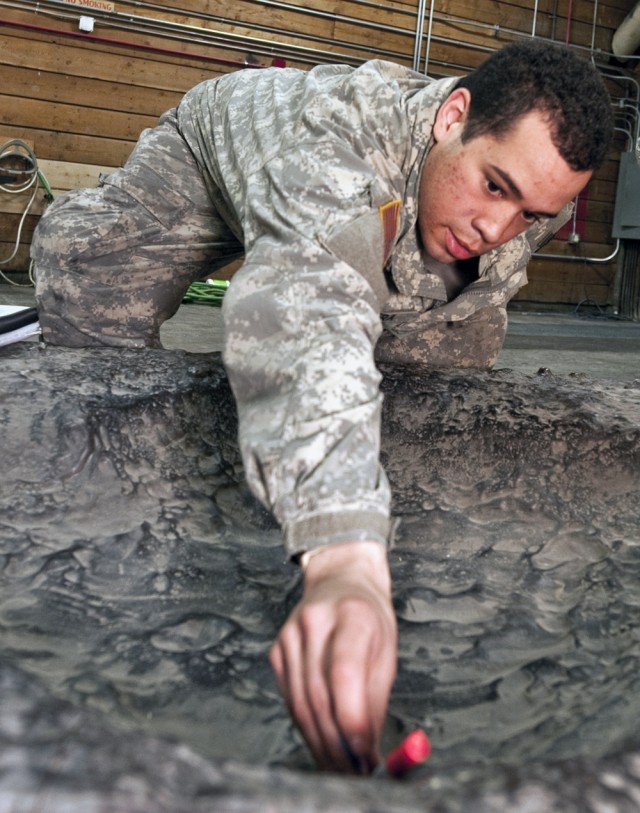JOINT BASE ELMENDORF-RICHARDSON, Alaska -- Much can be gleaned from analyzing the craters from an enemy mortar, field artillery cannon or rocket launcher.
Soldiers like Army 2nd Lt. Matthew Luman, 1st Squadron (Airborne), 40th Cavalry Regiment, say it's a lost art, because nowadays radar can help locate the source of enemy fire. However the skill can pay dividends when radar fails or troops are at a remote outpost.
In most cases forward observers, like those of the 1-40th who took part in crater analysis training March 31, would be the ones analyzing craters.
"[The training is] valuable in identifying where our threats are," Capt. Teresa Doerr, 1-40th fire support officer said. "Mortars and indirect fire are a huge threat to our (installations),"
By telling which direction the projectile came from and how far away, troops are more likely able to tell where their threat is coming from and can then engage the enemy with artillery.
Troops can also use the crater analysis techniques to locate weapon stockpiles left over from the Soviet invasion of Afghanistan during the 1970s and '80s.
Doerr offered a couple examples of the kind of information crater analysis can provide.
If Soldiers can determine if an 82-mm mortar made the crater, for example, then its point of origin couldn't be more than three kilometers away, she said. Or, if they notice the fire has consistently been coming from one direction, that could indicate a stockpile or weapons cache off in the distance.
Crater analysis teams can also determine if a projectile was fired at a high-angle, which can clear mountainous terrain; or at a low-angle, for long ranges over even terrain.
They can use crater analysis tools to determine the size of the munitions. If the fuse is visible, it is easier to tell what types of munitions were used and which direction the rounds came from.
Luman said crater analysis is a skill which has faded over the years.
"It's not something you see very often, crater analysis is kind of a lost art," Luman said. "A lot of places don't even teach it anymore. [Everyone] gets a manual, but sometimes, when you actually get to see it, it's a little bit better."




Social Sharing